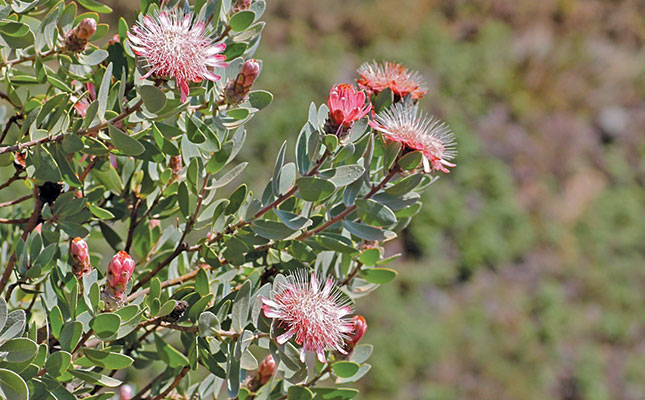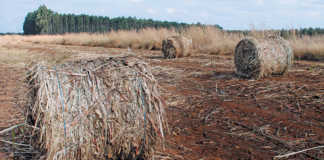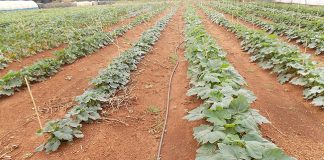
Photo: Dr Alexey Yukovlev
Wildflowers and thatch harvesting are established industries in areas such as the Cape Floristic Region. If you are involved in these activities, you can help to ensure their sustainability by managing these resources carefully and responsibly. There are a number of ways to do this.
First, avoid introducing extra-limital species and cultivars or hybrids (those that historically did not occur in the area) into natural vegetation. Plants have evolved mechanisms to help prevent hybridisation with species that occur nearby, but not those that are naturally geographically separate.
Proteaceae and Ericaceae for example, hybridise easily, so take the necessary precautions.
Ensure that wildflower orchards are pollinator-proof or at least established away from natural vegetation; genetic contamination of wild populations is a serious threat.
Manage the vegetation for biodiversity rather than for the benefit of currently commercially popular species. The economic benefits are greater and you will also be better positioned to deal with any changes in consumer preferences.
Harvesting cycle
Wild harvesting of dekriet (Thamnocortus insignis) and wyfieriet (T. erectus) is an established industry with many farmers relying on this resource to augment cash flow.
Use only existing stands of restios.
Do not brush cut natural vegetation to produce pure stands. Consider establishing dekriet and wyfieriet stands on old, marginal farmlands; this will alleviate pressure on wild populations and help prevent loss through wildfire.
The harvesting cycle for dekriet is five to eight years and for wyfieriet seven to eight years. This ensures maximum yield as well as overall health of the population.
Livestock grazing
Livestock production often relies heavily on natural rangelands. Mismanagement can be seen in altered species composition, reduced cover and erosion. This is a threat not only to biodiversity, but also to the long-term financial viability of livestock production.
Effective management of natural rangelands requires an understanding of cause and effect in an ecosystem. For example, continuous selective grazing with no rest leads to an increase in unpalatable species; left to reproduce, these eventually dominate.
Vegetation has evolved along with indigenous grazers and browsers and it is best to emulate their foraging habits. Under natural conditions, a high concentration of animals of mixed feeding habits (bulk, selective and concentrate feeders) exerts high pressure on the vegetation.
When the quantity of forage has decreased, they move on. The veld then has a period in which to recover, and because all the plants are utilised equally, their composition does not alter.
Where vegetation type permits, a combination of bulk grazers (cattle) and selective grazers (sheep) should be accommodated at a ratio of one bulk grazer to five mature selective grazers. In some studies, this approach not only utilised forage better but doubled production (increase in body weight) in sheep. Cattle production rose 14% on average.
Rest periods
To manage forage utilisation optimally, divide rangelands into camps based on landscape features and vegetation. Slopes and flat plains should be separate camps; this is because animals tend to feed in areas that are more accessible, as well as those with higher production.
This leads to over-utilisation and inevitable degradation.
Prevent continous grazing by establishing rest periods. There are two types of resting, namely seeding rest and vigour restoration. Resting during seeding is a short rest period, whereas resting to restore plant vigour lasts for the duration of winter in higher-rainfall areas and for a full year in arid areas.
Rotational grazing systems
Rotational grazing is the only effective way to implement resting and ensure proper utilisation of forage. At least one third of the camps should be fully rested during the year.
There are two types of rotational grazing systems: high-production grazing (HPG) and high-utilisation grazing (HUG). HPG is short and intense: all preferred species are consumed to a stage that will allow rapid regrowth and high production.
HUG relies on concentrating high numbers of livestock in a camp until they have eaten all available forage, but before damage is done to the plants.
HPG is an effective system for high-production grasslands where the species composition and density are known; HUG is a better system for arid rangelands easily degraded by selective grazing.
Finally, remember the adage: first do no harm! Remediation (repairing environmental damage) is costly, both ecologically and financially.
Source: Retrieved from conservationatwork.co.za.











